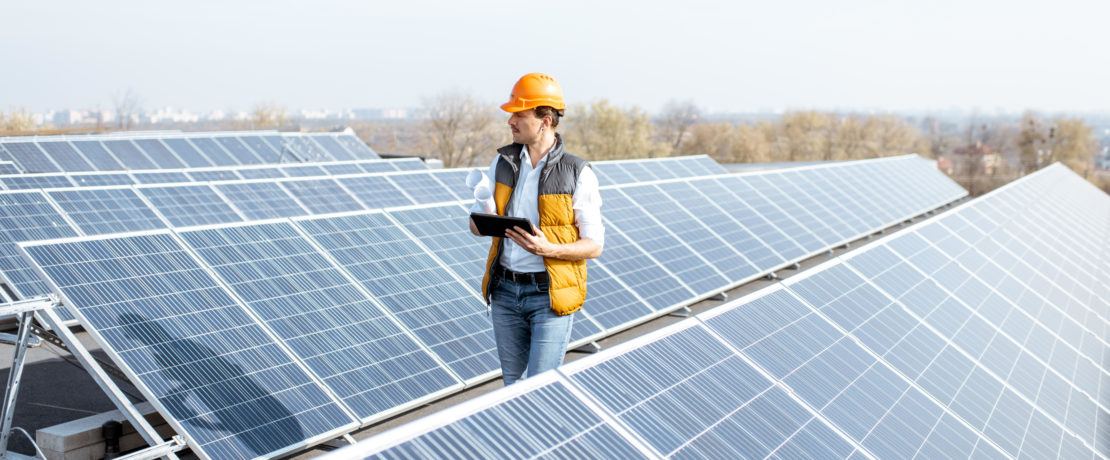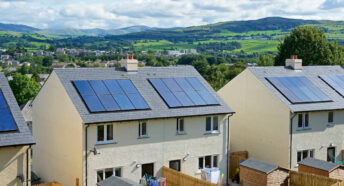Renewable energy is the future, and it can give power back to communities
The arguments are all but over. Renewable energy is obviously the future. The problem, if there is to be any realistic chance of avoiding calamitous climate change, is that we can wait no longer. As the government’s net zero review, commissioned by Liz Truss, makes clear, we need a massive uplift in renewables and we need it now.
But there are sticking points – and some are stickier than others. While there will undoubtedly be a need for onshore wind farms the UK is blessed, as so often in its past, by its geography, jutting out of the north Atlantic and buffeted by frequent gales off its long coastline. We have plenty of wind and relatively little land is required to capture it.
Solar is more of a challenge. It’s an essential part of the mix – truly, a must have – yet there is no escaping the fact that the number of panels required will cover many tens of thousands of hectares. Some worry that vast solar and wind farms are harming the beauty and character of our countryside without any apparent strategic plan for putting them in the right places. Such concerns, as the review has found, are legitimate. Throw an energy crisis into the mix with the housing, food, nature and climate crises, and the debate becomes less about how our land looks and more about how it is used.
Rooftop solar changes the game
This is where solar energy becomes transformative, if only our politicians would grasp the opportunity. Because solar could democratise energy while leaving our most valuable countryside untouched.
With a few simple planning policy tweaks and economic incentives the installation of solar panels could enhance the value of homes, farms and factories in every pocket of the country. Solar panels are like a money-saving carbon reduction device that plugs on top of existing structures. They can change the game, tipping it in favour of the masses. The top-down, centralised model of consumers drawing all their power from energy giants enjoying a near-monopoly is no longer the only game in town. Already, pioneering community energy projects are generating clean power that is owned by, and benefits, local people. This is the future we want to see.
Community-led energy
There are now hundreds of community energy groups across the country, where people have come together to take meaningful action to reduce both their carbon emissions and their bills at once. Unfortunately, the government has yet to catch up with the times, not least in providing the incentives required to kick start this green revolution on a significant scale. Homes, schools, hospitals, council buildings, stadiums, shopping centres, car parks and factories are the power stations of the future – a web of rooftop solar that brings community ownership of clean energy to the whole country.
The net zero review, carried out by Tory MP Chris Skidmore and published on Friday, underlined what most sensible people already knew – that net zero and economic growth go hand in hand.
Planning policy needs to be amended so that it actively promotes solar panels on suitable brownfield land, avoiding best and most versatile agricultural land. Solar panels should be a standard expectation for all suitably orientated roofs on new buildings, including homes; and planning permission should not be granted for commercial or public car parking spaces unless they also provide solar energy generation.
The government needs to give more financial support to community energy so that new brownfield solar schemes can be connected to the grid quickly.
Solar potential
The Climate Change Committee has called for 54GW of installed solar capacity by 2035. The vast majority of panels could be placed unobtrusively. Initial analysis by CPRE, using highly conservative estimates, shows that if only a quarter of the UK’s total 250,000 hectares of south-facing commercial roof space was useable, it could generate 25GW electricity annually. Add that to the 8GW available by covering the country’s car parking spaces with solar panels and the 14.5GW of solar capacity already installed and you have 47.5GW taken care of. With ambition, it’s clear we could generate more or less all the country’s solar power in a way that would enjoy widespread public support.
Playing catch up
We would nonetheless be playing catch up. France has already announced plans to fast track renewable energy by mandating car parks nationwide be covered by solar panels – a popular policy that could generate up to 11GW of power, equivalent to 10 nuclear reactors.
There is no question that our future will be solar powered. What hasn’t been decided, yet, is how.
There are corporations that would like to own and control our energy supply. They insist the only way is giant, industrial-sized solar farms. But they’re wrong. This time around, people power is actually possible. It’s a decentralised future of renewable energy cooperatives sprouting up in communities across the country, supported by the government.
Many people will still choose for their electricity to be supplied in the business as usual way. Others will much prefer community power and the democratisation of energy. The government must guarantee choice.






